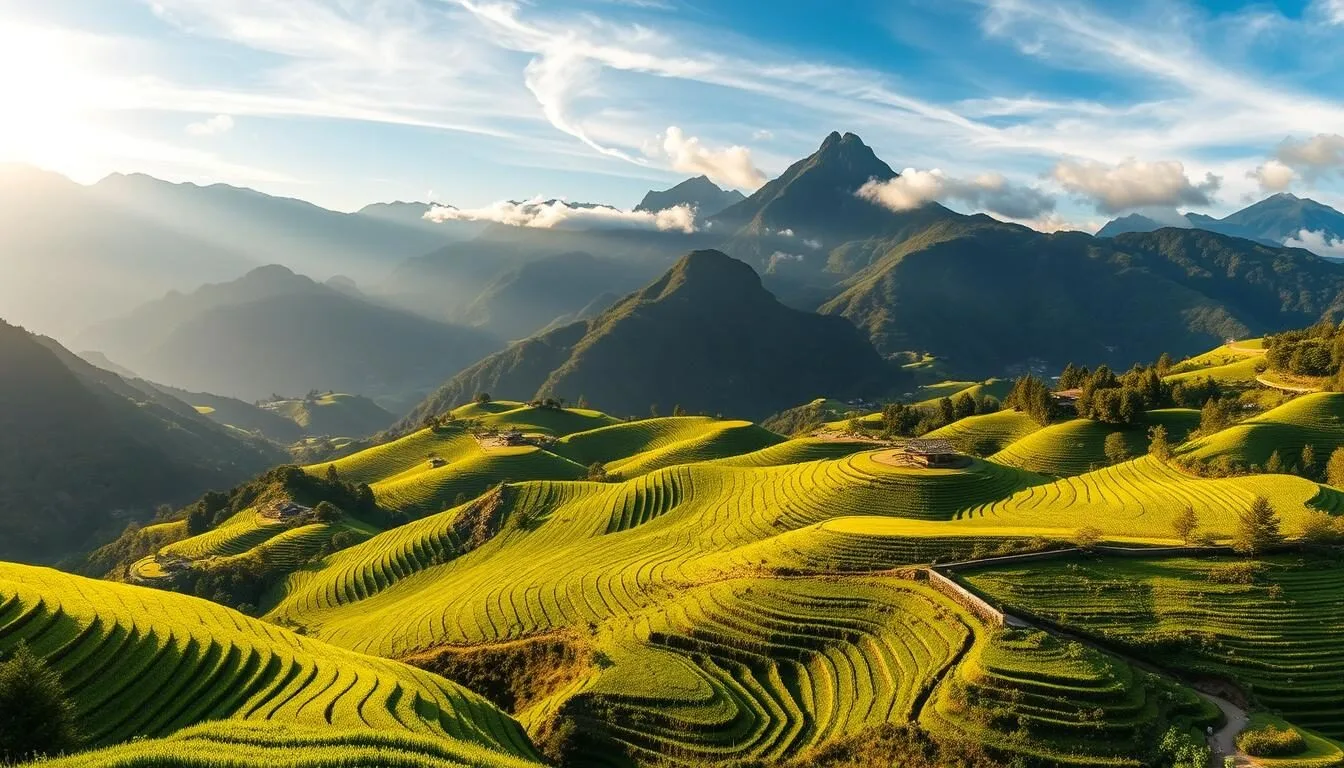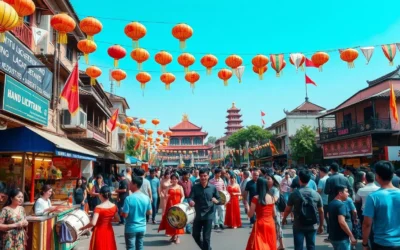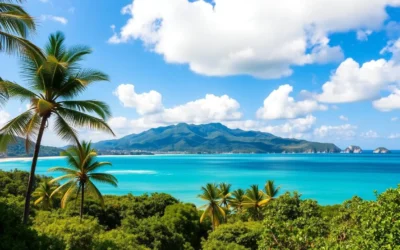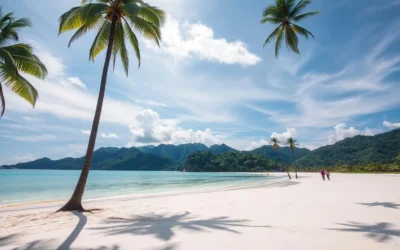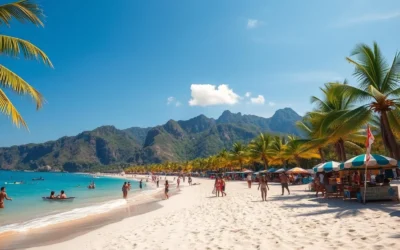✓ Accommodations ✓ Flights ✓ Rental Cars
Nestled in the majestic Hoàng Liên Sơn mountain range, Sapa is a hidden gem waiting to be explored.
At an altitude of 1,600 meters, this picturesque town offers a unique blend of natural beauty and cultural diversity. As you wander through the misty mountains and emerald rice terraces, you’ll discover the rich heritage of ethnic minority groups like the Hmong, Dao, and Tay.
Whether you’re trekking through the countryside or experiencing authentic homestays, Sapa promises an unforgettable adventure. With its cool climate and breathtaking scenery, this town is a perfect refuge from the hustle and bustle of city life.
Discovering Sapa: Vietnam’s Mountain Paradise
Nestled in the majestic Hoang Lien Son mountain range, Sapa is a haven for those seeking tranquility and cultural immersion. As you explore this enchanting town, you’ll discover the rich tapestry of cultures that make Sapa so unique.
Where is Sapa Located?
Sapa is situated in the northernmost part of Vietnam, in Lao Cai Province. It is approximately 380 kilometers northwest of Hanoi, making it a popular destination for those looking to escape the hustle and bustle of city life. The town is perched at an elevation of about 1,600 meters above sea level, offering a cool climate that is a welcome respite from Vietnam’s tropical lowlands.
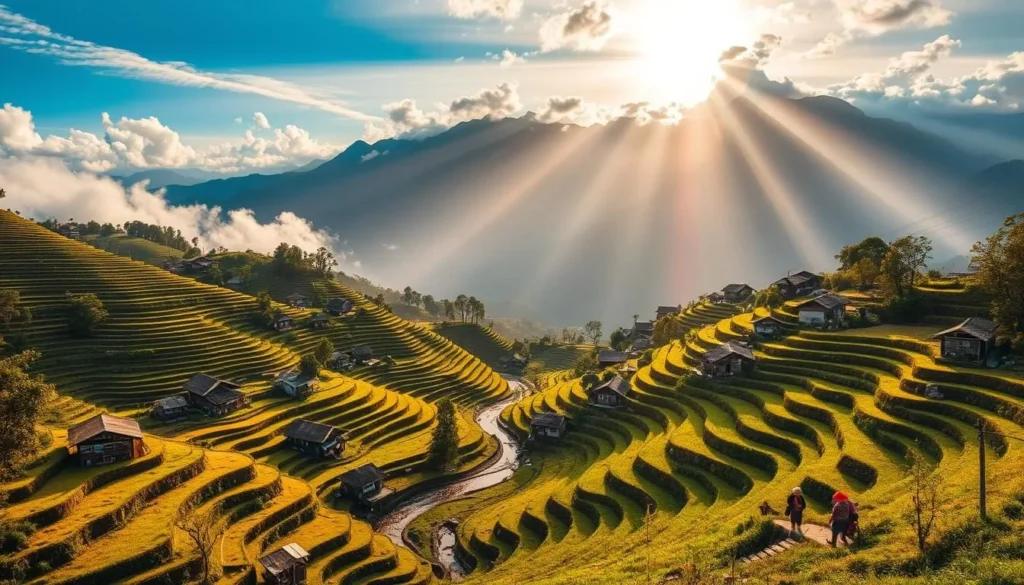
The Cultural Significance of Sapa
Sapa is home to various ethnic minority groups, including the Hmong, Dao, Tay, and Giay people. These communities have preserved their traditional ways of life, making Sapa a culturally rich destination. The village surroundings offer a glimpse into authentic rural Vietnamese life, with traditional crafts like indigo dyeing and hemp weaving still practiced today.
| Ethnic Group | Traditional Practices | Cultural Significance |
|---|---|---|
| Hmong | Indigo dyeing, embroidery | Rich textile heritage |
| Dao | Herbal medicine, traditional festivals | Spiritual beliefs and customs |
| Tay | Rice cultivation, folk music | Agricultural traditions |
The culture of Sapa is a melting pot of these ethnic groups, each contributing their unique customs and traditions. Visiting the surrounding villages provides an opportunity to experience this rich cultural heritage firsthand.
Best Time to Visit Sapa
If you’re considering a trip to Sapa, understanding the local weather patterns is crucial. Sapa, known for its breathtaking landscapes, has a climate that can be quite unpredictable.
Seasonal Highlights in Sapa
Sapa’s mountain climate offers a range of experiences throughout the year. The summer months, although rainy, bring lush green landscapes, making it an ideal time for trekking. In contrast, the winter months offer a serene beauty with frost-covered terraces and occasional fog, creating a mystical atmosphere.
Here’s a breakdown of what you can expect seasonally:
| Season | Weather | Highlights |
|---|---|---|
| Summer (May – Sep) | Rainy, humid | Lush green landscapes, ideal for trekking |
| Winter (Dec – Feb) | Cold, frosty | Serene beauty, frost-covered terraces |
Weather Considerations for Your Trip
Sapa’s weather can be quite unpredictable, with conditions changing rapidly throughout the day. The rainy season, which runs from May to September, can make trekking challenging due to slippery trails. Winters are cold, with temperatures sometimes dropping below freezing.
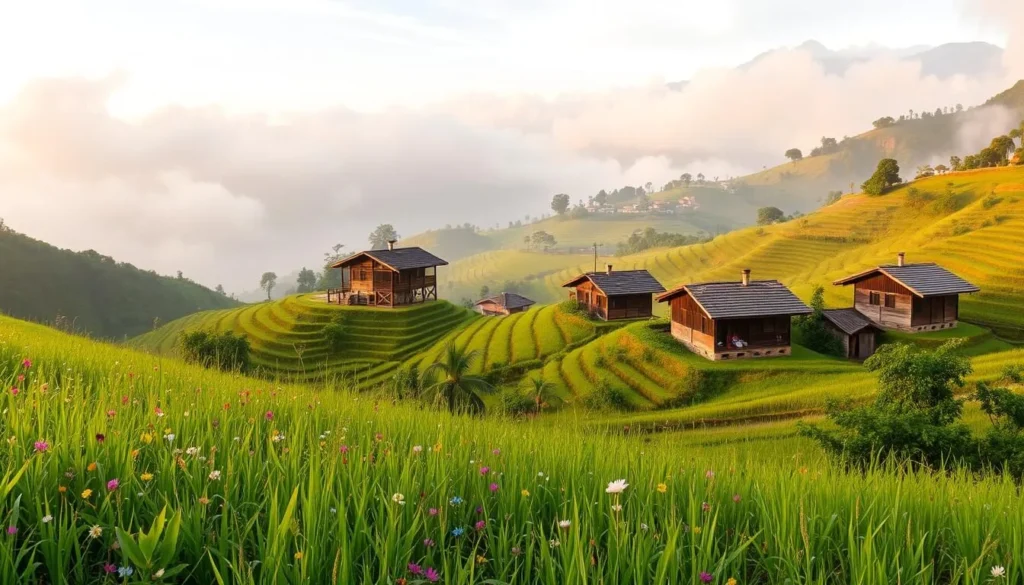
To make the most of your trip, it’s advisable to pack layers for varying conditions and build flexibility into your itinerary to accommodate any weather changes. Understanding these weather considerations will help you plan a more enjoyable and stress-free trip to Sapa.
How to Get to Sapa from Hanoi
Traveling from Hanoi to Sapa is a journey worth savoring, with multiple transportation options available. You can choose from trains, sleeper buses, or private transportation, each offering a unique experience.
By Train to Lao Cai
One of the most popular ways to get to Sapa is by taking the train from Hanoi to Lao Cai. The train journey offers a comfortable and scenic ride, allowing you to enjoy the Vietnamese countryside.
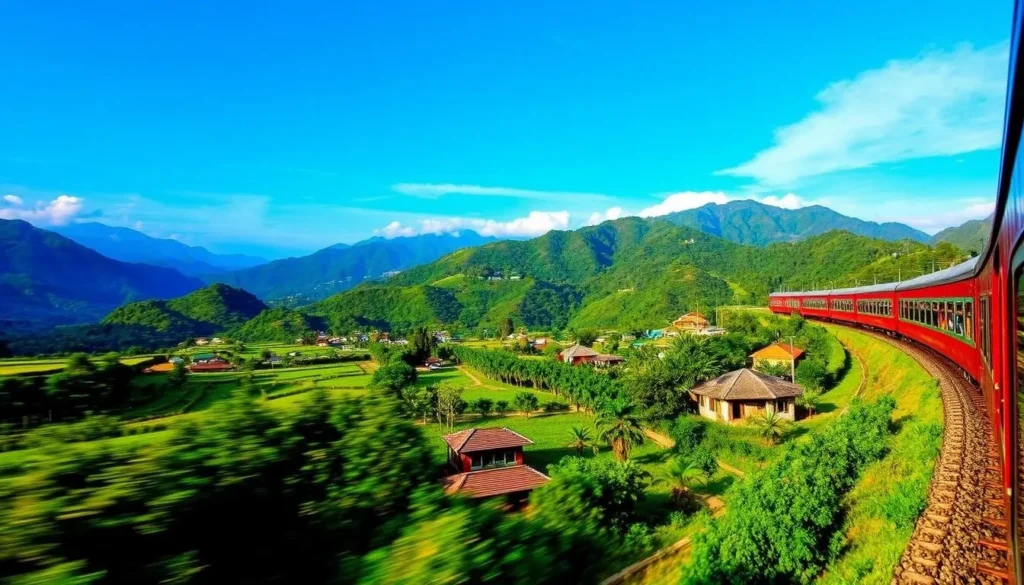
By Sleeper Bus
For a more budget-friendly option, consider taking a sleeper bus from Hanoi to Sapa. These buses are equipped with comfortable beds and often depart in the evening, arriving in Sapa early in the morning.
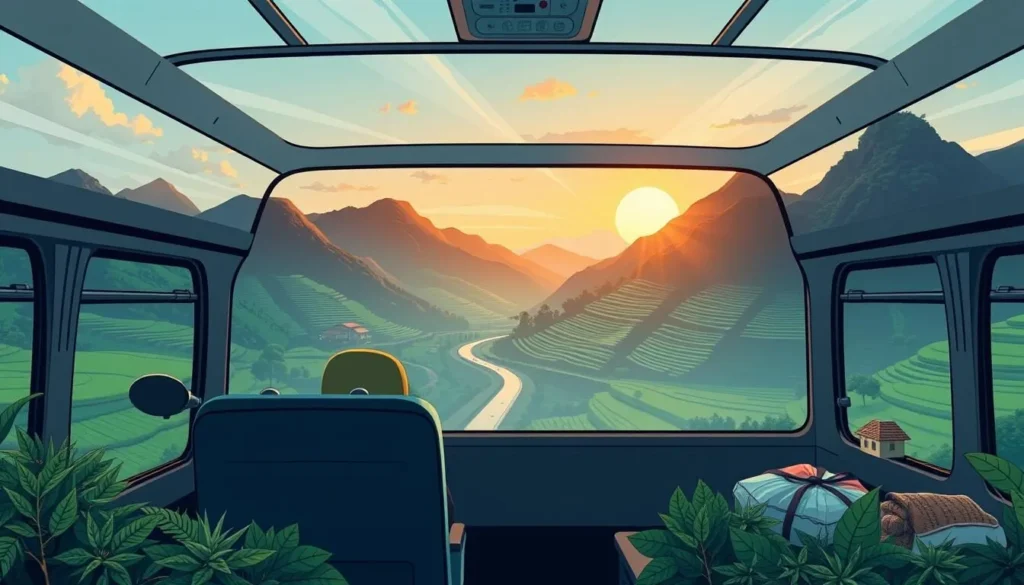
Private Transportation Options
For the ultimate in flexibility and comfort, consider booking a private car or tour from Hanoi to Sapa. This option allows you to customize your journey with scenic stops along the road, making the most of your travel experience. Many tour companies, such as Kampá Tour, offer door-to-door packages that include round-trip transportation, making it a convenient choice. You can enjoy the scenic views, stop at points of interest, and travel at your own pace, making it ideal for families, groups, or those seeking a more personalized experience. With prices ranging from $120-180 for a one-way trip, depending on the vehicle type, it’s a worthwhile investment for the comfort and flexibility it provides. Some companies even offer tours that include private transportation as part of a multi-day Sapa experience.
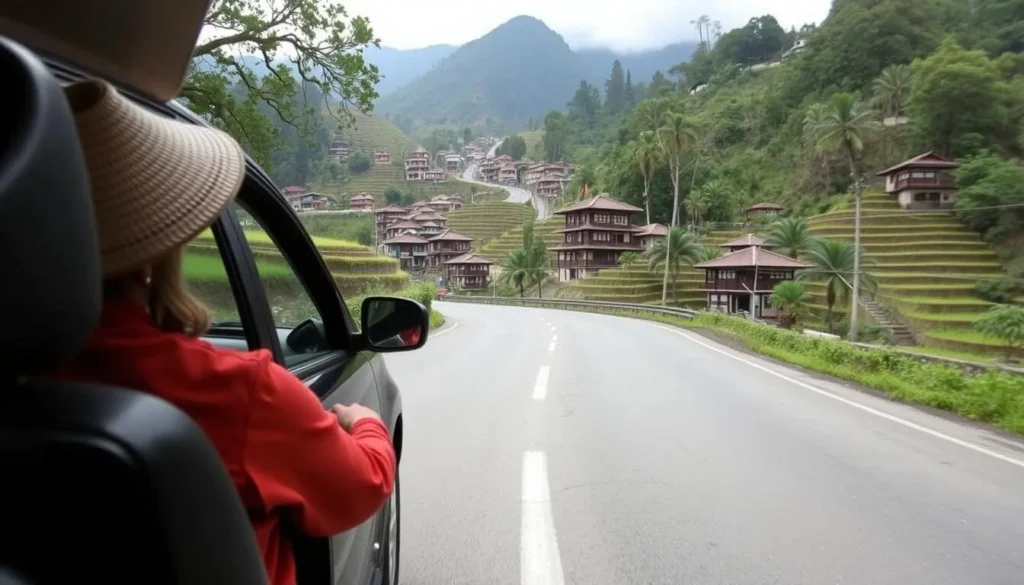
Where to Stay in Sapa
The right place to stay in Sapa can make all the difference in your Vietnamese adventure. With a range of options from luxury hotels to authentic homestays, you can choose the accommodation that best fits your travel style.
Hotels and Hostels in Sapa Town
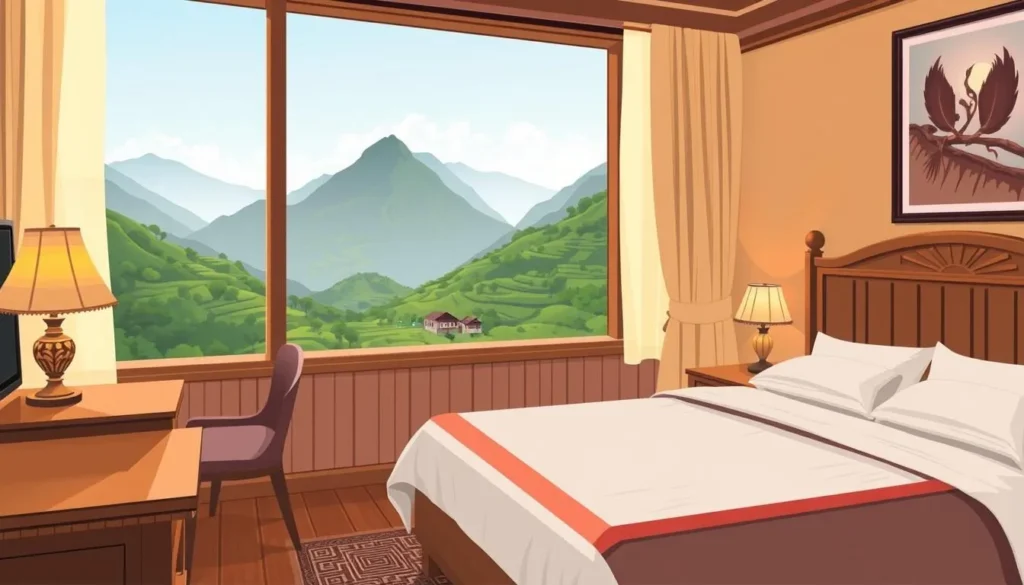
Sapa town offers a variety of hotels and hostels, catering to different budgets and preferences. You can find everything from basic hostels to luxury hotels with stunning views of the surrounding landscape.
Authentic Homestay Experiences
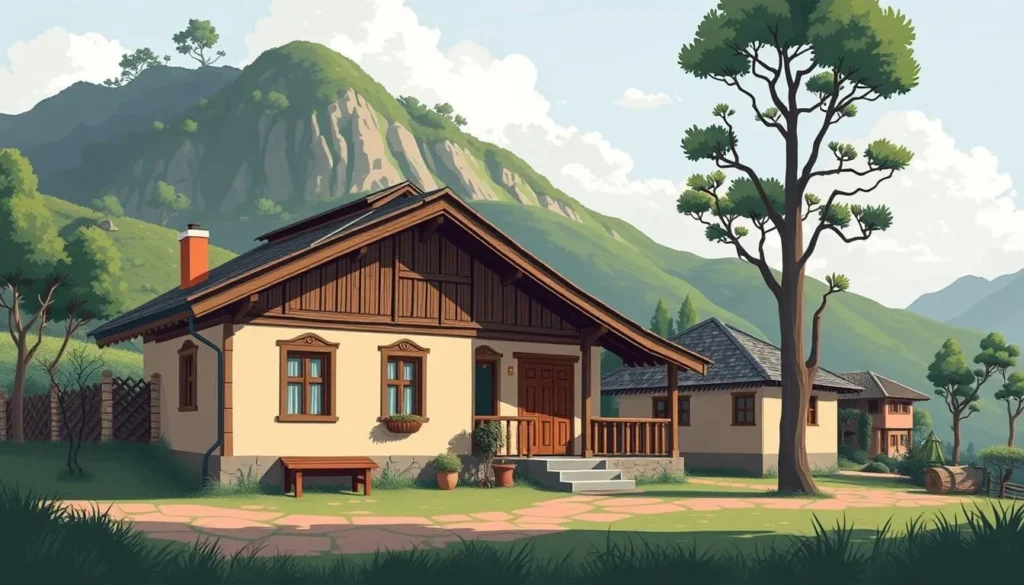
Spending the night in a traditional homestay is one of the most authentic Sapa experiences. You’ll share meals, stories, and daily life with families from ethnic groups like Hmong, Dao, and Tay. It’s a rare opportunity to learn about their customs and way of life.
Some key benefits of staying in a homestay include:
- Staying in a homestay with local ethnic minority families offers one of the most authentic and meaningful experiences in Sapa, allowing you to immerse yourself in traditional village life.
- Popular villages for homestay experiences include Ta Van (primarily Giay people), Lao Chai (Black Hmong), and Ta Phin (Red Dao), each offering slightly different cultural experiences and landscapes.
- Most homestays are simple wooden or bamboo structures with basic amenities, typically offering shared sleeping areas on mattresses with mosquito nets, though some now offer private rooms for guests seeking more privacy.
- The highlight of any homestay experience is the opportunity to share home-cooked meals with your host family, often featuring fresh local ingredients and traditional dishes like thang co (horse meat soup), bamboo rice, and mountain herbs.
- Beyond accommodation, homestay hosts often offer additional experiences such as guided village walks, traditional craft demonstrations, herbal bath preparations, or agricultural activities depending on the season, allowing you to interact with the local people and learn from them.
Trekking Through Sapa’s Breathtaking Rice Terraces
Trekking through Sapa’s rice terraces is a must-do activity when visiting this beautiful region. The stunning landscapes and picturesque villages make for an unforgettable experience.
Muong Hoa Valley Trek
The Muong Hoa Valley trek is one of the most popular trekking routes in Sapa, offering breathtaking views of the rice terraces and surrounding mountains. This trek is suitable for hikers of all levels and provides an opportunity to explore local villages and experience the culture of the ethnic minorities.

Essential Gear for Sapa Trekking
To ensure a safe and enjoyable trekking experience in Sapa, it’s essential to pack the right gear. Proper footwear is the most critical item, with waterproof hiking boots or trail runners highly recommended due to the often muddy and slippery conditions on the trails around the rice terraces.
Other essential items include weather-appropriate clothing, a small backpack with essentials like water, snacks, sunscreen, and a first aid kit. Don’t forget to bring a camera to capture the stunning landscapes and a dry bag to protect your electronics during unexpected rain showers.
- Waterproof hiking boots or trail runners
- Lightweight, moisture-wicking clothing
- Rain jacket or poncho
- Small backpack with essentials
- Camera with extra batteries
- Dry bag or waterproof cover
By being well-prepared, you can fully enjoy the beauty of Sapa’s rice terraces and have a safe trekking experience.
Exploring Sapa’s Ethnic Villages
The ethnic villages around Sapa are a treasure trove of cultural experiences. As you visit these villages, you’ll gain insight into the traditional ways of life of the local people.
Cat Cat Village
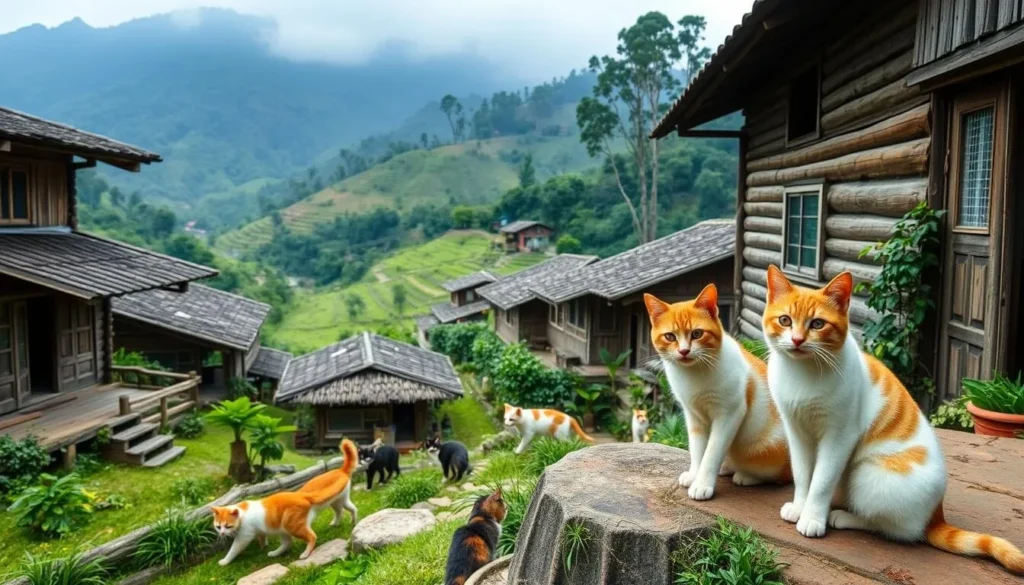
Cat Cat Village is one of the most popular ethnic villages near Sapa. The village is home to the Hmong people, known for their vibrant clothing and traditional crafts. You can explore the village, visit local homes, and learn about their customs.
Ta Van and Lao Chai Villages
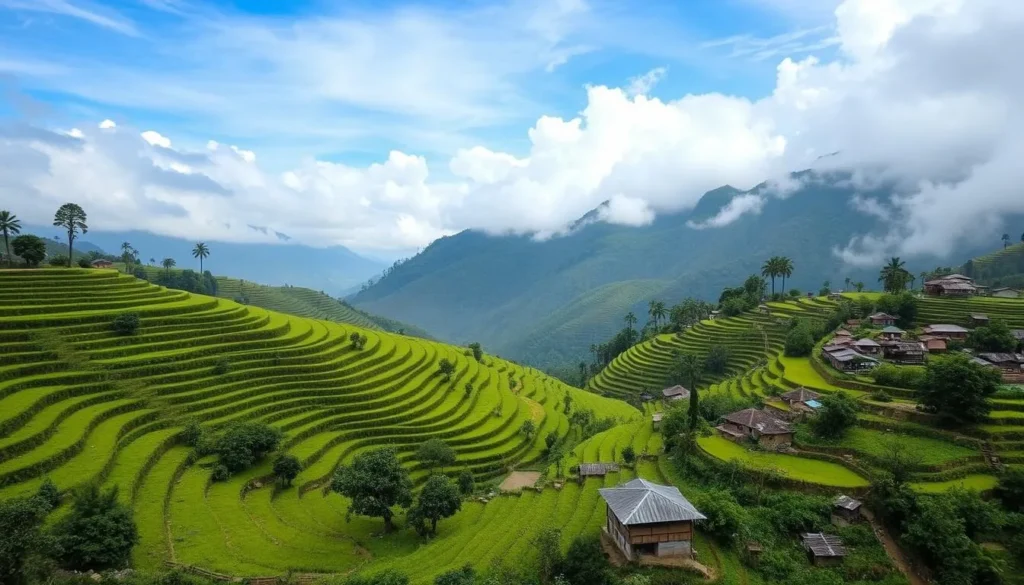
Ta Van and Lao Chai Villages offer a serene trekking experience through the picturesque rice terraces. The villages are inhabited by the Giay and Hmong people, who welcome visitors into their homes. You can experience the local culture and enjoy the breathtaking scenery.
Ta Phin Village
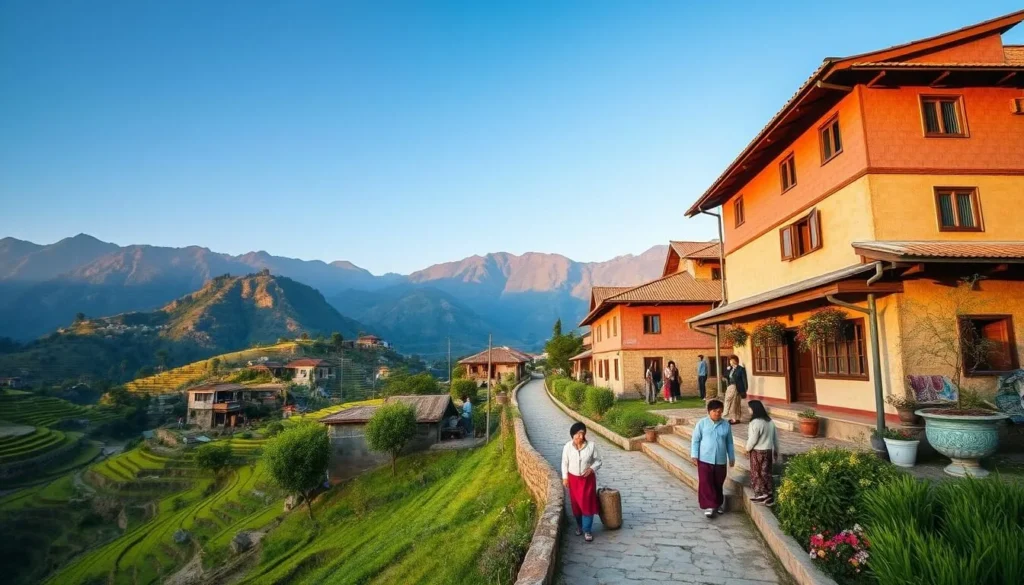
Ta Phin Village, located about 12km from Sapa town, is primarily home to Red Dao people. The village is renowned for its exceptional brocade weaving and embroidery traditions. You can stay in a homestay, try a traditional Red Dao herbal bath, and explore the surrounding rice terraces and forest trails.
Visiting these ethnic villages provides a unique opportunity to engage with the local people and learn about their customs. You can stay in homestays, enjoy local cuisine, and participate in traditional activities.
Conquering Fansipan: The Roof of Indochina
Fansipan, the highest peak in Vietnam, beckons adventurers to test their limits. Standing at 3,143 meters (10,312 feet) above sea level, it offers breathtaking views and a thrilling experience for those who dare to reach its summit.
Cable Car Experience to the Summit
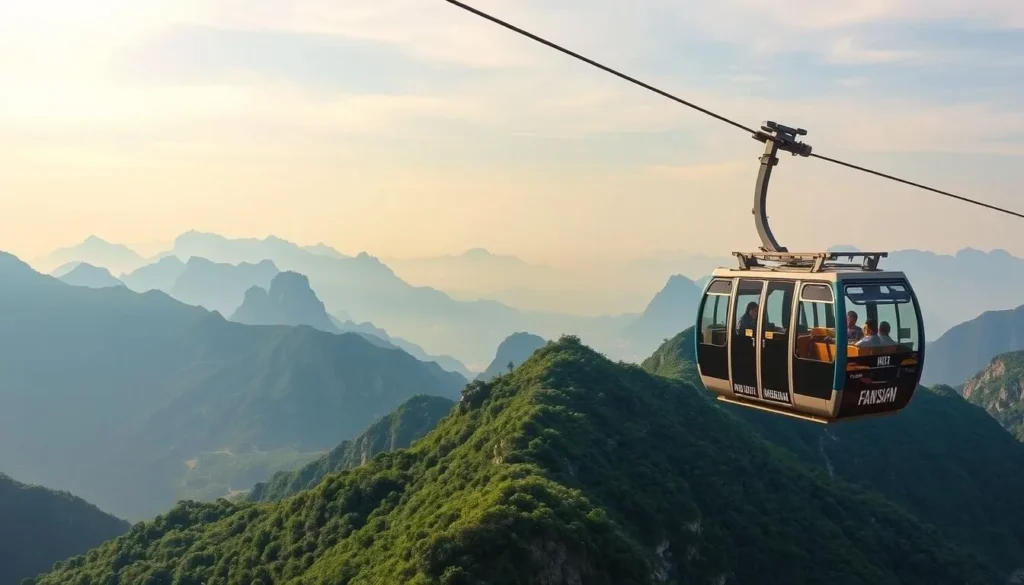
For those who prefer a more leisurely experience, the Fansipan cable car offers a convenient and scenic route to the summit. As you glide above the lush mountains, you’ll be treated to stunning vistas that are sure to leave you in awe. The cable car ride is an ideal option for families or those who may not be as physically prepared for the hike.
Hiking Fansipan Peak
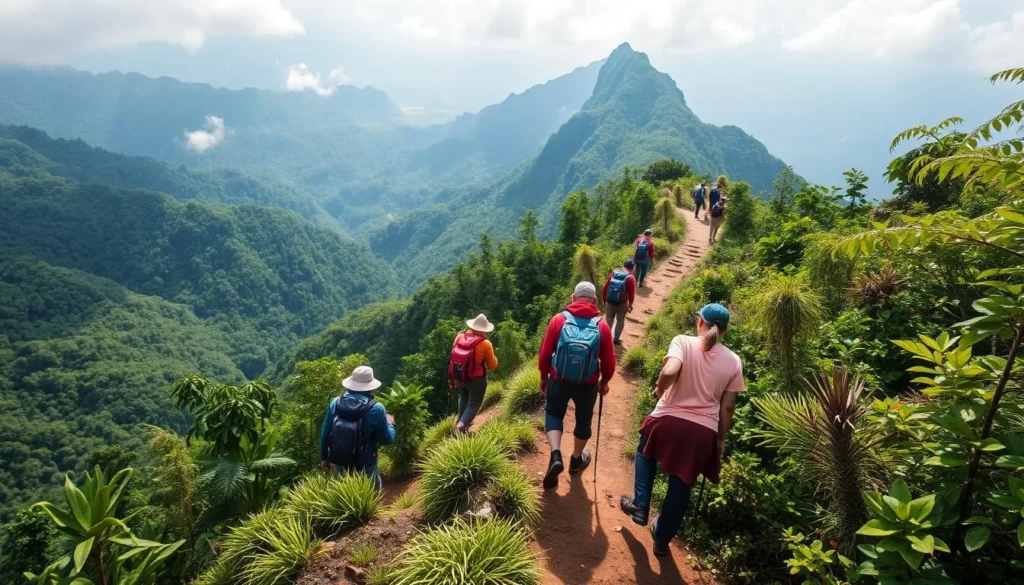
Hiking Fansipan Peak is a challenging endeavor that requires proper physical preparation, especially for those coming from lower elevations. The traditional hiking route to the summit typically takes 2-3 days round trip, with overnight camping or basic accommodation in mountain huts along the trail. A guide is mandatory for safety reasons, as the trail can be difficult to follow in foggy conditions and weather changes rapidly at higher elevations. The trek passes through diverse ecosystems, offering opportunities to spot unique flora and occasionally wildlife native to the Hoang Lien mountains. Reaching Vietnam’s highest point without mechanical assistance provides an incomparable sense of achievement and allows for a more intimate connection with the mountain landscape.
Whether you choose to take the cable car or hike to the summit, conquering Fansipan Peak is an experience you will never forget. With its stunning natural beauty and sense of adventure, it’s a must-do activity when visiting Sapa.
Sapa, Vietnam: Best Things to Do for Nature Lovers
If you’re a nature enthusiast, Sapa, Vietnam, is a destination that will captivate your senses with its stunning natural beauty. This picturesque town is surrounded by breathtaking landscapes, from lush green rice terraces to majestic mountains and serene waterfalls.
Love Waterfall
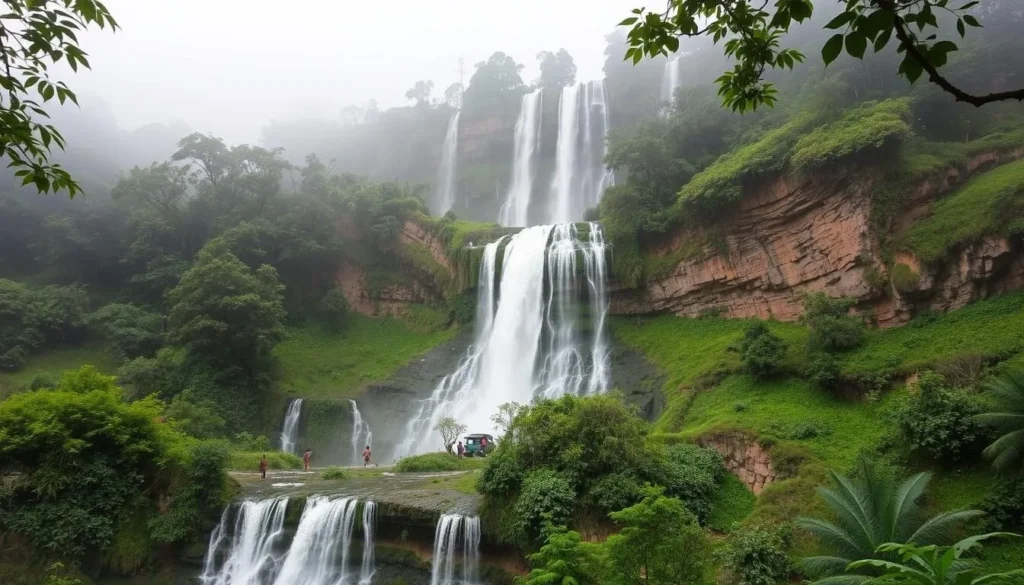
Love Waterfall, also known as Thac Tinh Yeu, is a beautiful and serene spot located along the road to O Quy Ho Pass. The waterfall is surrounded by lush greenery, creating a tranquil atmosphere that is perfect for nature lovers. Visitors can stop by, take in the breathtaking views, and enjoy the cool mist from the falls.
Silver Waterfall
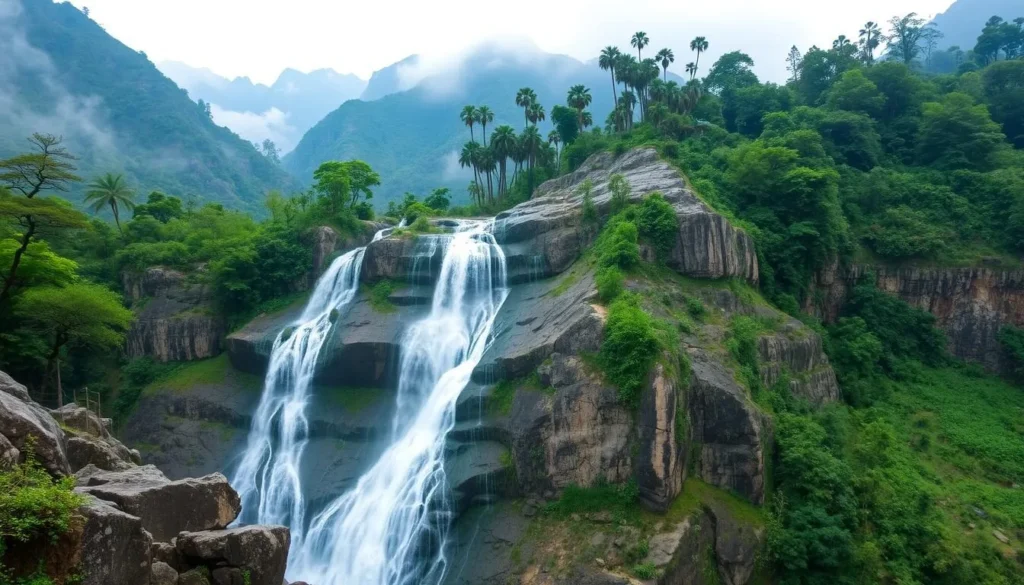
Silver Waterfall is another stunning natural attraction near Sapa. Located about 18 km from Sapa town, this waterfall is a sight to behold, especially during the rainy season when it’s at its peak. The waterfall cascades down a rocky slope, creating a misty veil that rises into the air, adding to its allure.
O Quy Ho Pass
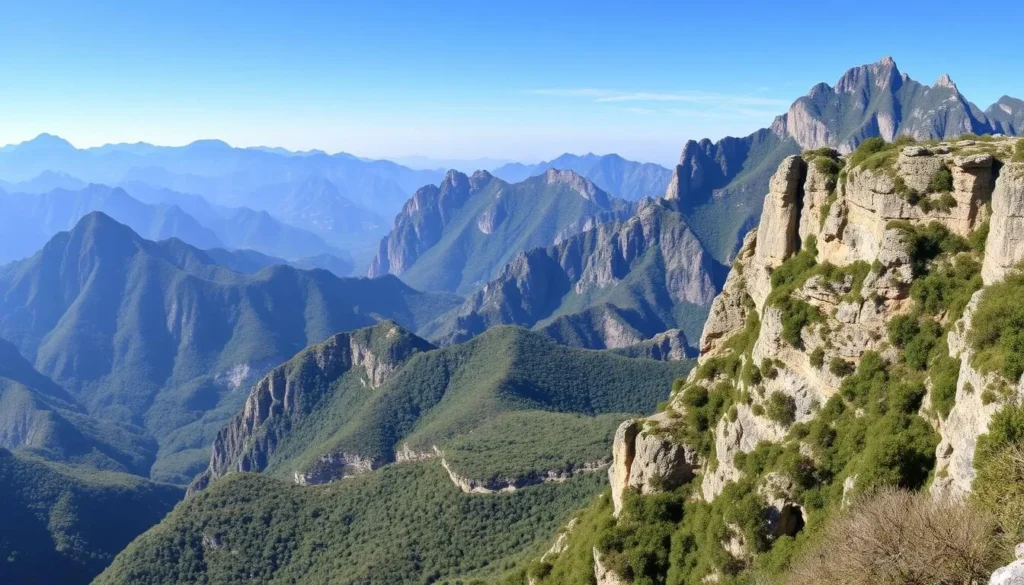
O Quy Ho Pass, also known as Tram Ton Pass, is Vietnam’s highest mountain pass, standing at 1,900 meters above sea level. The pass offers some of the most spectacular mountain scenery in the country, with breathtaking views of Mount Fansipan, the Roof of Indochina, and the Hoang Lien Son range. The road through the pass is an engineering marvel, with hairpin turns and steep gradients that make it a thrilling drive or motorcycle ride for adventure seekers.
The pass marks the boundary between Lao Cai and Lai Chau provinces, often with dramatically different weather conditions on either side. Visitors can enjoy panoramic vistas from the viewpoint nicknamed “Heaven’s Gate,” which offers stunning views of deep valleys and terraced fields stretching into the distance. Besides its natural beauty, the pass area is home to several attractions, including Silver Waterfall and Love Waterfall, as well as various small food stalls selling local specialties.
Cultural Experiences in Sapa
Immerse yourself in Sapa’s rich cultural tapestry through a variety of traditional experiences. The region is home to numerous ethnic minority groups, each with their unique customs and practices.
Traditional Herbal Baths
Experience the rejuvenating effects of a traditional Red Dao herbal bath in Sapa. The Red Dao people are known for their expertise in using local herbs to create therapeutic baths that relax both body and mind.
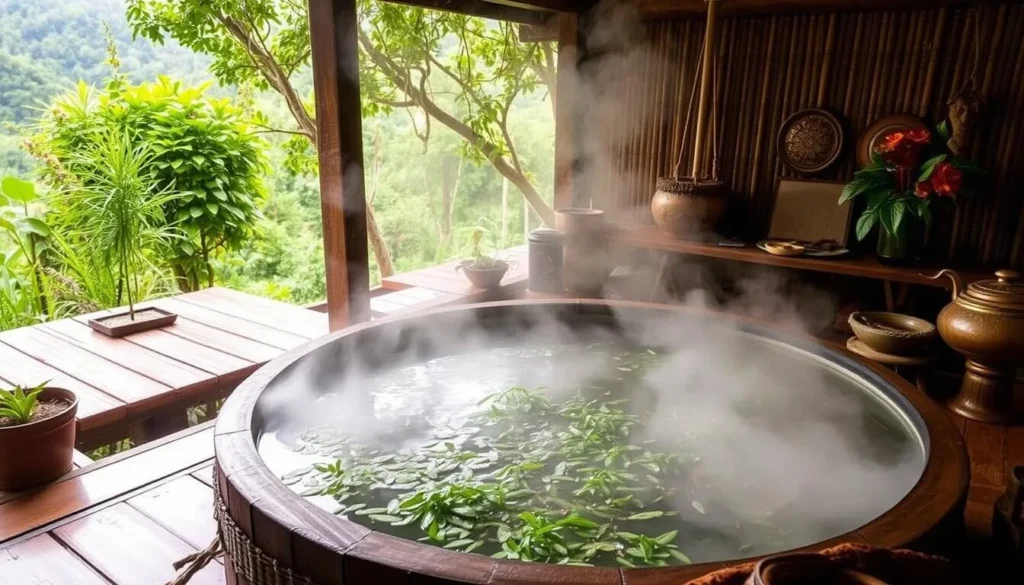
These baths are not just a relaxing experience but also an insight into the traditional healing practices of the Red Dao community. By participating in a herbal bath, you are supporting local traditions and experiencing the culture firsthand.
Learning About Hmong Batik and Textile Art
The Hmong people of Sapa are renowned for their intricate batik and textile art. Visitors can participate in workshops where local artisans demonstrate the process of creating these beautiful textiles.

By engaging in these workshops, you not only learn about the traditional techniques but also have the opportunity to purchase authentic souvenirs directly from the artisans, supporting the local economy and preserving cultural heritage.
Local Markets and Shopping in Sapa
Sapa’s vibrant markets are where you can find unique local products and warm hospitality. The town is home to several markets, each offering a distinct shopping experience.
Sapa Market
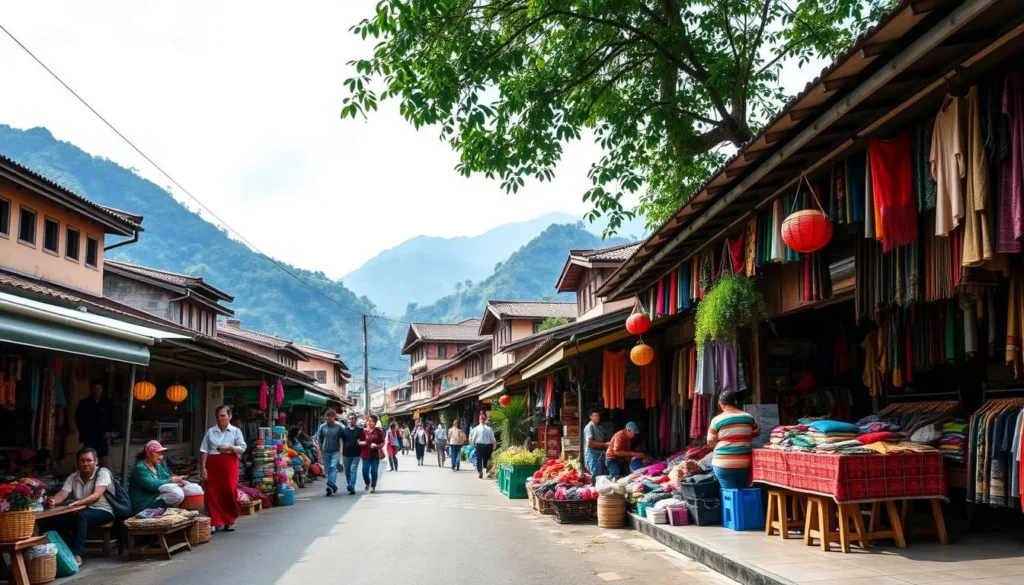
The Sapa Market is a bustling hub where local ethnic groups gather to sell their goods. You can find a variety of products, including handicrafts, textiles, and local produce. The market is an excellent place to experience the local culture and purchase unique souvenirs.
Love Market and Night Markets
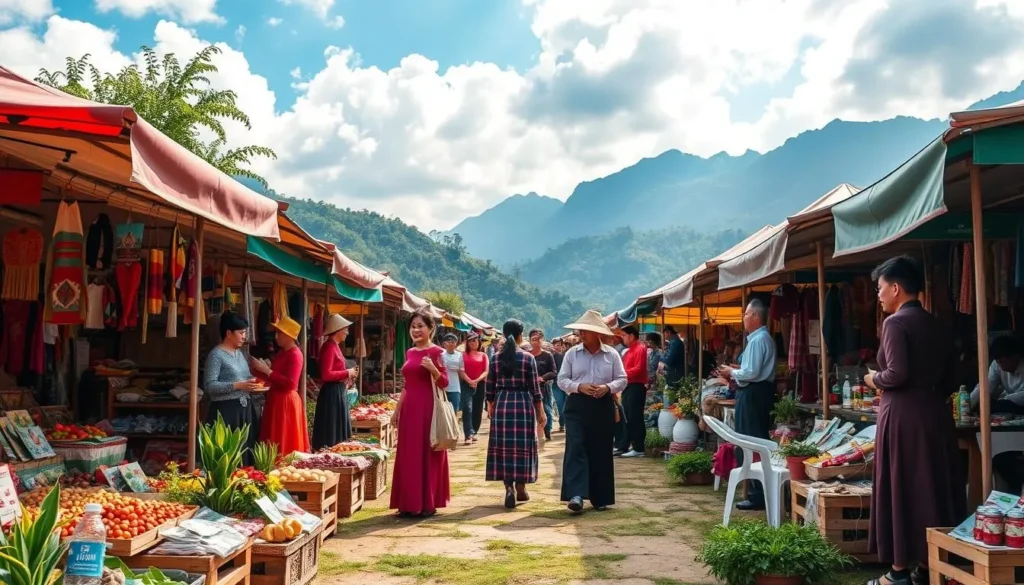
The Love Market, held on Saturday evenings near the Stone Church, is a cultural spectacle that showcases the romantic traditions of Sapa’s ethnic minorities. You can enjoy traditional music, dance performances, and cultural games. Sapa’s Night Market, running along Thac Bac and Fansipan streets every evening, offers a lively atmosphere with numerous stalls selling food, handicrafts, and souvenirs. The Night Market is particularly atmospheric after dark when colorful lanterns illuminate the streets.
Must-Try Food and Specialties in Sapa
The culinary delights in Sapa are as breathtaking as its landscapes, with a variety of dishes that showcase the local flavors. As you explore this mountain paradise, you’ll have the opportunity to indulge in a range of traditional cuisine that reflects the rich cultural heritage of the region.
Traditional Dishes of the Highlands
Sapa is renowned for its hearty and flavorful dishes, often made with locally sourced ingredients. Some must-try specialties include grilled meats, Thang Co (a traditional horse meat dish), and Com Lam (bamboo rice). These dishes are not only delicious but also provide a glimpse into the traditional cooking methods of the local ethnic minorities.
Where to Eat in Sapa
Sapa town offers a variety of dining options, ranging from simple street food stalls to upscale restaurants, with the highest concentration found around the central market area and Cau May Street. For an authentic dining experience at a reasonable price, consider visiting small family-run restaurants slightly away from the main tourist streets. One such place to dine is the Hill Station Signature Restaurant, located in an old French colonial building, offering refined versions of ethnic minority dishes in a comfortable setting with excellent mountain views.
At the right time, you can enjoy street food vendors around the central market, offering quick and inexpensive options like grilled meats and sticky rice. For a special dining experience, several homestays in surrounding villages offer home-cooked meals featuring ingredients grown in their own gardens or sourced from local markets.
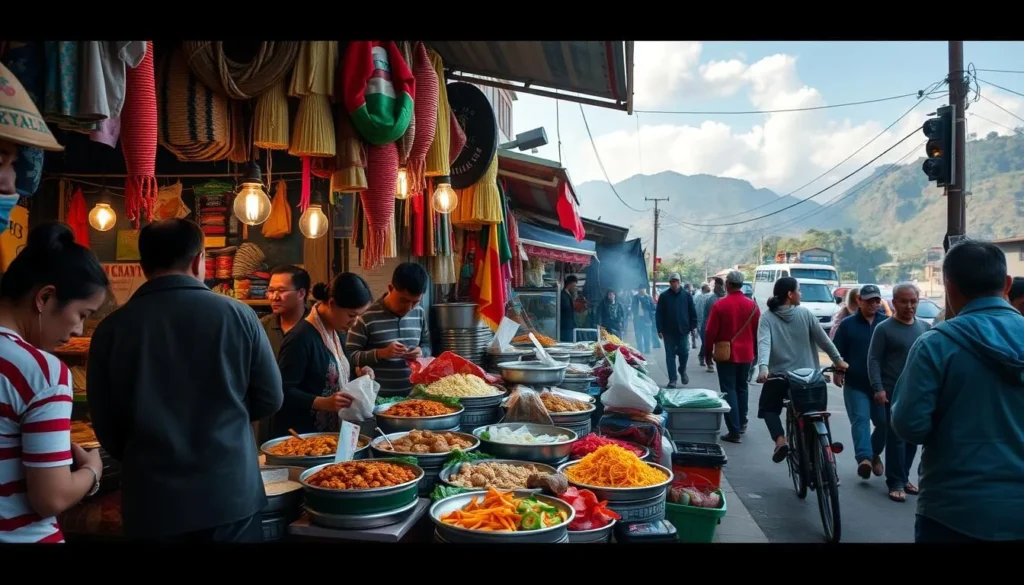
Day Trips from Sapa
Sapa is not just a destination; it’s a gateway to numerous exciting day trips that showcase the natural beauty and cultural richness of northern Vietnam. The area surrounding Sapa is dotted with hidden gems waiting to be explored.
Bac Ha Sunday Market
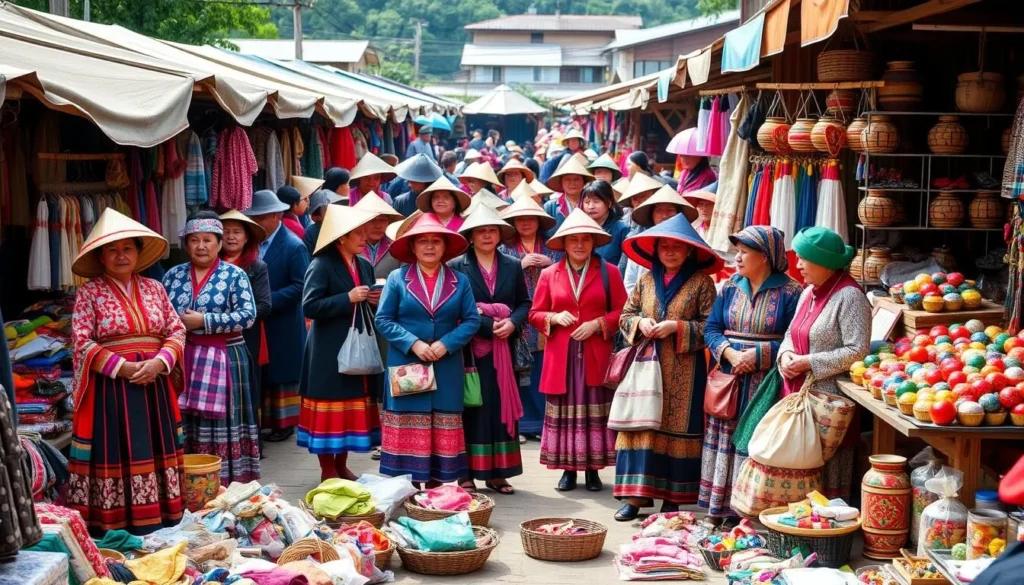
The Bac Ha Sunday Market is a must-visit destination for anyone traveling to Sapa. Located about 100km from Sapa, this bustling market is a hub for local ethnic minorities, including the Flower Hmong and Phu La people. Every Sunday, the market comes alive with vibrant colors and lively trading activities.
Visitors can immerse themselves in the local culture by browsing through the various stalls selling everything from traditional clothing to handmade crafts and local produce.
Seo My Ty Lake
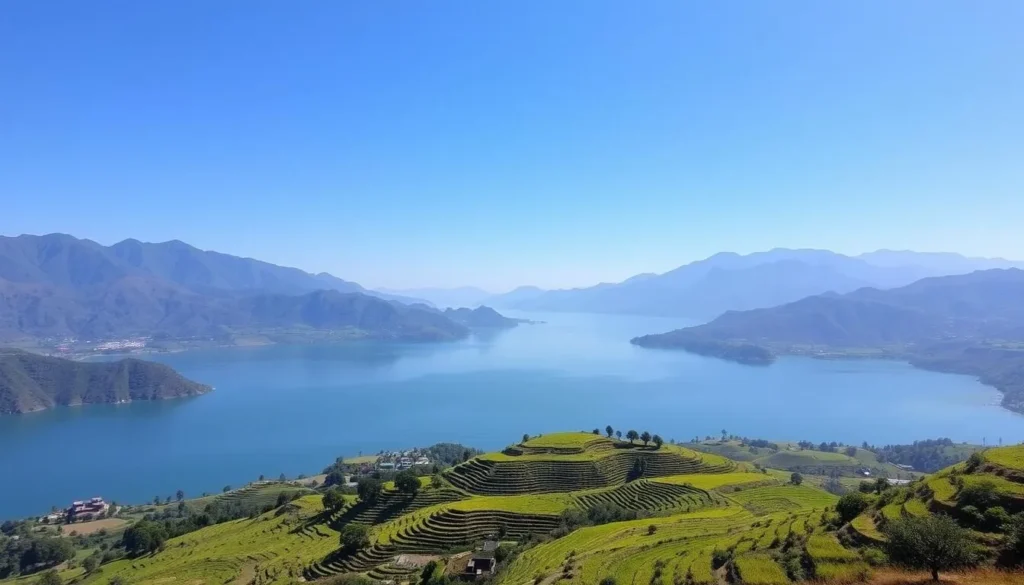
Seo My Ty Lake, situated about 20km from Sapa town, is a tranquil oasis that offers a serene escape from the hustle and bustle of daily life. This man-made reservoir, created as part of a hydroelectric project, has evolved into a picturesque destination surrounded by majestic mountains and lush terraced fields.
The journey to the lake takes you through less-visited areas of the Muong Hoa Valley, providing breathtaking views of traditional villages and agricultural landscapes. Visitors can enjoy a peaceful picnic, take in the unspoiled natural beauty, or simply relax in the serene atmosphere.
Practical Tips for Visiting Sapa
To ensure a smooth and enjoyable journey to Sapa, here are some practical tips to keep in mind. Sapa’s unique environment and cultural richness require some preparation to fully appreciate its beauty and charm.
Dealing with Local Guides and Vendors
When trekking or exploring Sapa’s villages, you may encounter local guides and vendors. It’s a good idea to be prepared to negotiate prices and to understand the local customs. Hiring a local guide can enhance your experience and ensure your safety, especially during the rainy season when trails can become slippery and dangerous.
Money and Budgeting
Budgeting for your trip to Sapa involves considering costs for accommodations, food, and activities. You should also budget for trekking fees, guide services, and souvenirs. Be aware that some places may not accept credit cards, so it’s wise to have some local currency with you.
Safety and Health Considerations
Sapa’s weather can be unpredictable, and the road conditions can be challenging, especially during the rainy season from May to September. Be prepared for changing weather conditions and potential roadblocks. When walking at night, be cautious on uneven sidewalks and steps, and consider carrying a flashlight. Additionally, be mindful of altitude sickness when ascending Fansipan, and take necessary precautions to stay safe and healthy.
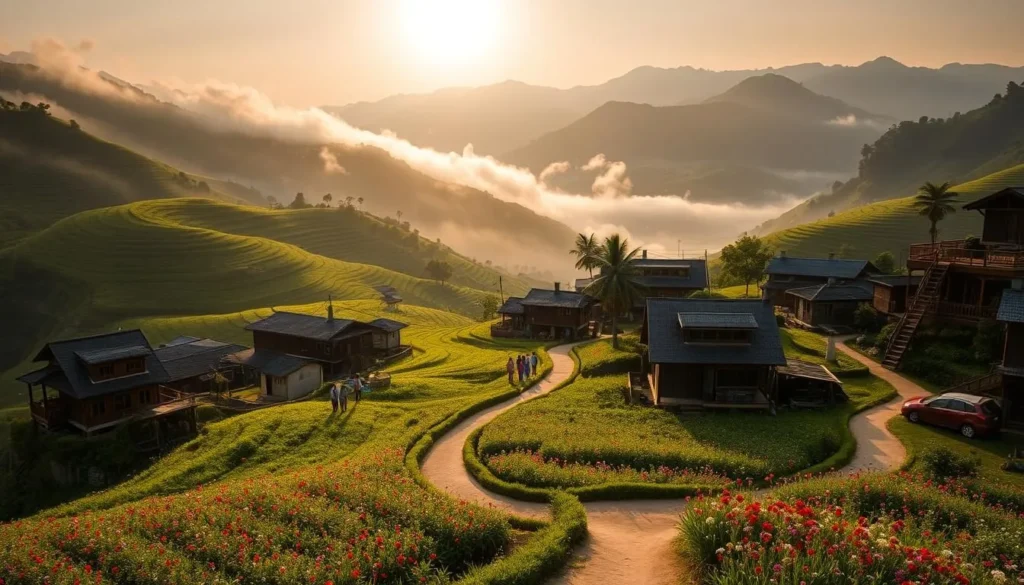
Best Photography Spots in Sapa
With its picturesque landscapes and diverse cultural experiences, Sapa is a photographer’s dream destination. The region offers a myriad of opportunities to capture stunning images, from the majestic rice terraces to the vibrant cultures of the ethnic minority communities.
Capturing the Rice Terraces
The rice terraces in Sapa are a photographer’s paradise, especially during the harvest season when the fields turn golden. To capture the best shots, visit the Muong Hoa Valley or Ta Van Valley, where the terraces are most expansive. Early morning and late afternoon are ideal times for photography, as the soft light enhances the textures and colors of the terraces. Don’t forget to include the local people working in the fields to add a human element to your photos.
![]()
Photographing Ethnic Minorities Respectfully
When photographing ethnic minority people in Sapa, it’s essential to be respectful and considerate. Establishing a connection before taking someone’s photo can make a big difference. A simple greeting in Vietnamese, like “xin chào,” or a smile can help create goodwill. While some locals might request a small payment for photos, it’s crucial to respect their wishes and either agree to their terms or refrain from taking the photo. Remember, you’re capturing moments of people’s lives, not just taking pictures.
- Be mindful of your surroundings and the people you’re photographing.
- Try to establish a connection before taking someone’s photo.
- Respect local customs and traditions when taking photos.
Conclusion: Why Sapa Should Be on Your Vietnam Itinerary
Sapa, with its breathtaking landscapes and rich cultural heritage, is a must-visit destination in northern Vietnam. As you plan your trip to this enchanting region, you’ll discover that Sapa offers a perfect counterpoint to Vietnam’s bustling cities and coastal attractions.
The combination of stunning natural beauty, authentic cultural encounters, and physical activities like trekking creates a multi-dimensional experience that appeals to a wide range of travelers. Whether you’re looking to explore the top attractions or venture off the beaten path, Sapa has something for everyone.
Some of the highlights of visiting Sapa include experiencing the vibrant culture of the local ethnic communities, enjoying the breathtaking scenery, and participating in outdoor activities like hiking. The best time to visit Sapa is during the spring or autumn when the weather is mild and the rice terraces are at their most picturesque.
- Explore the traditional ethnic villages and experience the local culture.
- Enjoy the stunning natural landscapes, from terraced rice fields to majestic mountains.
- Participate in outdoor activities like trekking and hiking to challenge yourself and enjoy the scenery.
In conclusion, Sapa is a destination that should be on every traveler’s Vietnam itinerary. With its unique blend of natural beauty, cultural diversity, and adventure activities, Sapa offers an unforgettable experience that will leave you with lasting memories. So, plan your trip to Sapa and discover the magic of this incredible region for yourself, day or night, at your own level.
The above is subject to change.
Check back often to TRAVEL.COM for the latest travel tips and deals.
